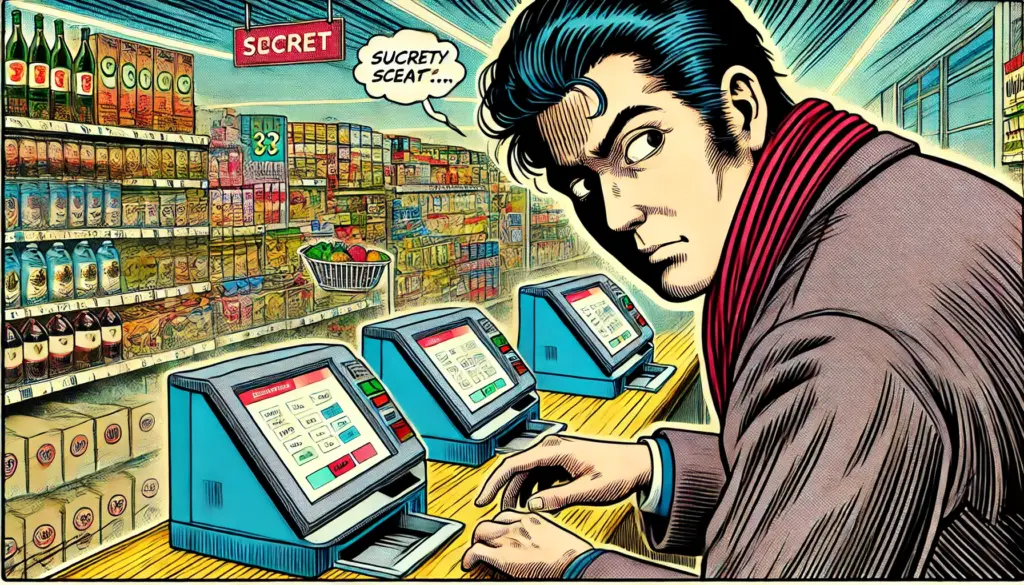
Self-checkout lanes have rapidly become a fixture in Japanese supermarkets. While they offer undeniable convenience and reduce staffing pressures, they’ve also become a playground for increasingly refined shoplifting techniques. From “empty scans” and “single-item scans” to the cunning “moyashi pass,” this silent warfare between criminals and stores is escalating daily. Let’s dive into the evolving landscape—its threats, countermeasures, and what it all means for consumers and retailers alike.
1. Why Self-Checkout Became a Crime Magnet
Japan’s retail sector, facing labor shortages and mounting cost pressures, has aggressively pushed self-checkout systems. But convenience often comes with a hidden cost—rising theft. Some supermarkets have reported shoplifting increasing several-fold within a year of introducing these systems, resulting in millions of yen in losses.
Without a staff member overseeing the transaction, malicious actors find new ways to take advantage—and those methods are getting more sophisticated.
2. Tricks of the Trade: How Do They Do It?
Empty Scan (“Kara-Scan”)
Here, thieves deliberately scan a non-barcode area or partially conceal the barcode so the system appears fooled—even though the item hasn’t been registered. This illusion of legitimacy makes detection harder.
Single-Item Scan (“Tanin-Scan”)
This technique targets bundled products. A six-pack, for instance, should scan as one item, but thieves scan the barcode on a single can—paying only for that can while slipping the rest out unpaid.
Moyashi Pass (“Moyashi-Pass”)
This is especially clever. The criminal pre-places a barcode from something cheap—like bean sprouts—over the more expensive item’s barcode. When scanned, the system accepts the cheap item, not knowing the real product was never registered.
These aren’t isolated anecdotes; they’re real crimes, and perpetrators have been caught. The consequences? In Japan, shoplifting can be prosecuted as theft, punishable by up to 10 years in prison or a fine of up to 500,000 yen.
My Insight: It’s chilling how everyday objects like bean sprouts become tools of deception. It’s a sobering reminder that innovative technology can be subverted unless constantly reinforced.
3. How Stores Strike Back: Tracking, Cameras, AI
Despite increasingly creative theft, the battle is far from one-sided. Self-checkout systems are tied deeply into POS and inventory management. Discrepancies—where stock doesn’t match sales—trigger audits, allowing staff to review camera footage and identify offenders.
Some stores even display self-checkout video feeds in real time on monitors to deter would-be thieves, signaling that every action is under surveillance.
AI Surveillance to the Rescue
Now, AI is entering the fray. Retail camera systems equipped with image recognition can detect when a customer’s hand holds an unscanned item or when there’s a “scan-fake” attempt. Visual cues—like green or red overlays—prompt real-time actions: “Please rescan,” or “Unregistered item detected,” effectively reducing scan-miss incidents by a significant margin.
My Insight: This blend of AI and human oversight illustrates how clever systems can balance convenience with accountability. No matter how subtle a scam, something as benign as a glowing on-screen alert can reshape behavior.
4. What This Means for Retailers, Shoppers, and the Future
Retailers
They’re in a pattern of constant adaptation—enhancing cameras, integrating AI, and leaning on POS analytics. Every theft recovered is another reason to advance, not retreat.
Shoppers
While honest customers enjoy speed and contactless checkout, growing vigilance might erode that convenience. Expect more prompts, occasional checks, or pauses—especially as tech steps in to verify every scan.
Society at Large
These tactics show that crime doesn’t stay static; it evolves. Similarly, retail tech isn’t just about convenience—it must always future-proof against exploitation.
5. Wrapping Up: Self-Checkout Isn’t a Criminal’s Paradise
Referring to self-checkout as a “criminal paradise” is an exaggeration. Sure, opportunities exist—but they’re rapidly closing. With inventory data, CCTV, and AI-driven deterrents, stores are tightening the net. These technologies don’t just catch criminals—they prevent crime by making cheap tricks blatantly visible.
If anything, today’s self-checkout environment is just a battlefield—one where both sides continue to raise their game. For shoppers, the key is: be cautious, stay compliant, and let technology do the rest.



















































